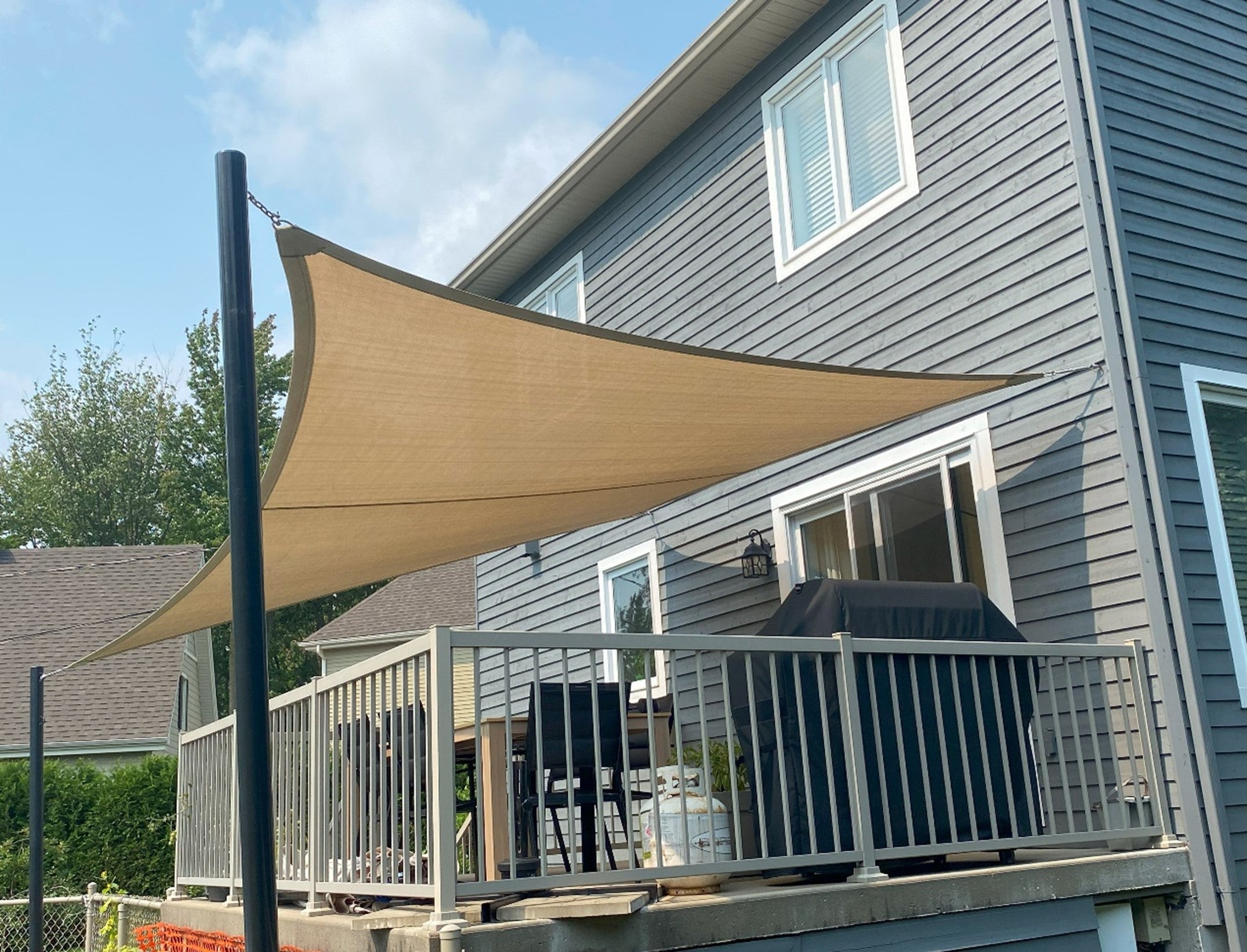HOW TO MEASURE A SHADE SAIL
To get a quote for a sail all you need to send us are the edge (or perimeter) measurements. However, once you ready to place an order we will need all the diagonals and pole heights as well.
MEASURING TO PLACE AN ORDER:
Measuring your shade sail is a critical part of the project. Shade Space recommends you always install your poles or fixing points before measuring up for a custom-made shade sail. Custom made sails are specifically manufactured to fit your site, and they can be made to almost any shape or size, so make sure all your fixing points are established before measuring your shade sail.
It is also recommended to install all the fixing points – eye bolts and eye plates before measuring. Take all measurements from the inside of the fixing eyes. If you are measuring without the eye bolts in place, mark a cross on the poles at the center point where the mount will go and measure from this mark.
If you are measuring without the eye bolts, please indicate this when sending us your measurements as we will need to take this into account when designing the sail fabric.
Before you start make sure your tape measure you are going to use is long enough for the longest edge and that you have someone to help hold the tape. Make sure you take accurate measurements and double check them all while measuring.
To order a shade sail you need the following Measurements.
- Perimeter measurements between each mount point. label each post with a letter and record the measurements in a clockwise direction. For example on a 4-side sail you will have A-B, B-C, C-D and D-A.
- All diagonal measurements are required for Manufactuing a sail. Record these in the same way. e.g A-C and B-D
- Height measurements for each post.
Start by drawing a rough sketch of the sail shape and labelling each mount point of your sail like the example of a 4 sided one below:



HEIGHT MEASUREMENTS
When measuring a shade sail—especially on sloping ground—it’s important to determine the relative heights of each fixing point (or pole) rather than simply measuring from the ground to the top of the pole. This ensures the sail will be tensioned correctly and achieve the intended slope or shape. Below is a step-by-step guide to measuring these heights correctly:
“Relative Height” Matters
- Ground levels can be misleading. If your site is sloped or uneven, measuring each pole from the ground up will not give the true height differences between fixing points.
- Proper tensioning depends on height differences. Shade sails often need a certain slope for water run-off, wind resistance, or aesthetic reasons. Getting the relative heights correct ensures the sail performs as intended.
Establish a Horizontal Reference Point
You’ll need a level reference line that’s truly horizontal. You can create one in a few ways:
- Laser Level (Preferred): A laser level will project a perfectly horizontal line onto each pole or nearby surface.
- String Line and Spirit Level: If you don’t have a laser, stretch a string line between the posts and use a spirit level to make sure it’s perfectly horizontal. You can start at the first post, then wrap the string around each post in turn, pull it tight and tie it off back at the starting point.
Mark the Reference on Each Pole (or Fixing Point)
- Once you have a horizontal line established at a convenient height (for example, waist-high), project (or stretch) it so that it touches or crosses all potential fixing points.
- On each pole or wall bracket location, make a clear mark at the height where the laser beam or string line touches.
Measure From the Reference Mark to the Proposed Sail Attachment Point
Now that every pole or wall bracket has a horizontal reference mark:
- Measure vertically from the reference mark up to where the sail hardware will attach (the “fixing point”).
- Record this measurement for each post (or wall bracket).
This measurement tells you exactly how much higher (or lower) each attachment point is, relative to the same reference level.
Shade Space has developed a 3D Shade Sail Measurment verifier which we use to check the geometrical integrity of all measurement sets. We will send you a link to this so you can check your sizes when you have placed an order with us.







Share:
Choosing the Right Shade Sail for Your Needs in Australia
Creative Shade Sail Design Ideas for Modern Homes